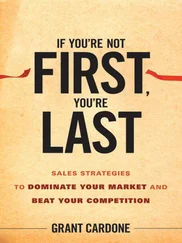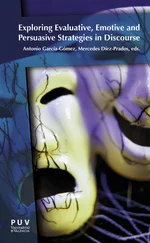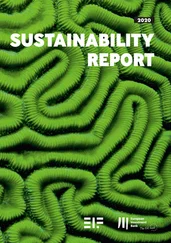
FIGURE 4.1 The funnel.
A “whole systems” perspective is necessary in sustainable development, as the various problems (greenhouse gases, extreme poverty, deforestation, illiteracy, etc.) are inherently interrelated and complex.
The funnel ( Fig. 4.1) metaphor is a way of thinking about the unsustainable path that global society is on, where our space for deciding on options is becoming narrower and narrower per capita. This is very different from the illusion that limits to growth are represented by a “cylinder” where isolated social and ecological impacts can be addressed and “solved” separately.
The negative effects of society's unsustainable path can be described as “hitting the funnel walls.” Organizations (communities, businesses, project teams, etc.) can feel the impact of hitting the funnel walls in a variety of ways, including the following:
Increased costs for resources and waste management
Lost investment in projects that quickly become obsolete
Stricter legislation
Litigation
Loss of market share to more cutting edge
Insurance costs
Consumer and shareholder activism
Loss of good reputation
Organizations that have an understanding of the funnel will be better able to act strategically, communicate more effectively to internal and external stakeholders, and lead the shift toward a sustainable society.
THE FOUR SYSTEM CONDITIONS FOR SUSTAINABILITY
In order to build this framework for sustainability, society must adopt the four system conditions in order to be ecologically sustainable. TNS summarizes the Four System Conditions in the following text: In order for a society to be sustainable, nature's functions and diversity are not systematically:
1 Subject to increasing concentrations of substances extracted from the earth's crust.
2 Subject to increasing concentrations of substances produced by society.
3 Impoverished by overharvesting or other forms of ecosystem manipulation.
4 Resources are used fairly and efficiently in order to meet basic human needs worldwide.
System Condition 1—Substances from the Earth's Crust Must Not Systematically Increase in the Ecosphere
This means that materials like fossil fuels, metals, minerals, and other natural resources must not be extracted from the earth at a faster rate than they are reentering or depositing into the earth's crust or even its atmosphere. A good example of violating this condition is the extraction of fossil fuels like oil or coal. When the fossil fuel is combusted, the carbon in the coal, for instance, is converted to carbon dioxide. For most of the human existence, the carbon dioxide emitted would eventually be reabsorbed by trees and other vegetation. The rate of emitting carbon dioxide was equal to the rate of absorption. Consequently, the carbon cycle was in balance and there was no violation of System Condition 1. The concentration of carbon dioxide was consistently about 280 ppm. However, we are now emitting carbon dioxide at a faster rate than it is being absorbed, thus causing an increase in the carbon dioxide concentration in the atmosphere—exceeding 400 ppm. This cover of carbon dioxide is preventing the release of reflected sun rays back into the atmosphere, thus causing an increase in the temperature of the Earth—global warming, which is also known as climate change.
If this condition is not met, the concentrations of substances in the ecosphere will increase and eventually reach some limits beyond which it will be almost impossible to reverse. In the case of carbon dioxide, many scientists believe that it will be impossible to reverse, even if we stopped emitting carbon dioxide. In a report by the National Oceanic and Atmospheric Administration, it stated that “changes in surface temperature, rainfall, and sea level are largely irreversible for more than a thousand years after carbon dioxide emissions are completely stopped.” In an interview with the lead author, Susan Solomon, she said, “People have imagined that if we stopped emitting carbon dioxide that the climate would be back to normal in 100 or 200 years. What we're showing here is that that's not right” [4].
System Condition 2—Substances Produced by Society Must Not Systematically Increase in the Ecosphere
This means that substances must not be produced at a faster rate than the rate at which they can be broken down and integrated back into nature or redeposited into the earth's crust. If this condition is not met, the concentration of substances in the ecosphere will continue to increase and eventually reach undesirable limits beyond which it will be difficult reverse. In most cases, this upper limit is not known.
It is critical that we eliminate our contribution to the progressive buildup of chemicals and compounds produced by society such as dioxins, polychlorinated biphenyls (PCBs), and dichlorodiphenyltrichloroethane (DDT). In addition to these very toxic chemicals, there are many other substances produced by society that are accumulating in nature and are detrimental to the environment.
A very interesting example of the violation of System Condition 2 is that of ozone. The chemical name for ozone is tri-oxygen as it consists of three oxygen atoms as opposed to two atoms for the oxygen molecule. Electromagnetic radiation or the sparking from high voltage applications will cause the oxygen molecule in the air to disassociate into two oxygen atoms, and then each atom will combine with another oxygen molecule to form ozone. Devices that require high voltages and as a result produce ozone are arc welders, ionic air purifiers, laser printers, and photocopiers. Ozone is also created by precursors such as nitrogen oxides, carbon monoxide, and various volatile organic compounds (VOCs).
Ozone in the lower atmosphere is a pollutant and may cause respiratory problems. In the upper atmosphere, however, ozone is beneficial as it prevents potentially damaging electromagnetic radiation from reaching the earth's surface. Other man-made substances like chlorinated fluorocarbons (CFCs) break up in the atmosphere and the free chlorine or fluorine atoms become catalysts to break up the ozone molecule. This has caused the formation of an “ozone hole” in the atmosphere that allows electromagnetic radiation to reach the earth. So this is an example of the formation and destruction of ozone being the result of violating System Condition 2.
As a result of the damage created by the CFCs, the Montreal Protocol of 1987 called for the reduction and the eventual ban of CFCs chemicals for use as refrigerants and other applications. The major chemical companies then started producing hydrogenated chlorinated fluorocarbons (HCFCs), which are considerably less destructive to the ozone layer [5]. Electrolux, the refrigerator and appliance company, decided not to replace their CFC chemicals with a less toxic HCFC because this still went against System Condition 2. Instead, they opted to research for a totally biologically harmless substitute.
System Condition 3—The Physical Basis for Productivity and Diversity of Nature Must Not Be Systematically Diminished
This means that we cannot harvest or manipulate ecosystems in such a way that productive capacity, ecosystem services, and diversity systematically diminish. While the first two system conditions refer to generation of substances into the ecosphere, this condition pertains to the destruction of the natural resources in such a way or to an extent that they cannot regenerate and be useful. An example is the over harvesting of forests to meet the current demand for wood, or for its conversion to paper. This also has a detrimental effect in reducing the sequestration of carbon dioxide. Human activities need to work in harmony with the cyclic principle of nature. Carbon dioxide emitted as a result of the combustion of fossil fuels is absorbed by vegetation and returned to the earth's ecosphere. Overharvesting to meet the current demand may make it impossible for future generations to meet their requirements.
Читать дальше













